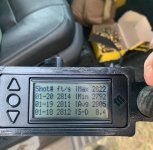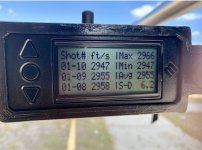Powder charge accuracy is critical, otherwise you cannot have certainty about just what the load is that you're actually testing, or be able to have confidence in your own skills when a round goes flyer.
Avoid distractions like the plague. Load alone except when teaching. No TV, No talk radio, nothing but the task at hand.
Keeping it simple is my approach; only do a step if it's proven
to you that it helps. Weigh time involved against the improvement that time buys. Never do something without a clearly understood reason. Whail all those neato, tempting gadgets and tweaks actually do have at least some value, they may take enough time to face you with an actual choice.
Do the minimum necessary steps that are actually doing something positive, and do them with maximum consistency.
It takes as long as it takes to get it right the first time. Rushing reloading is a fool's economy.
If you ever discover that you have crafted a lot of ammunition that is in any way dangerous, you are morally obliged to disassemble it safely, ASAP. Never leave a dangerous round lying around.
Keep records, never leave a critical value to memory. Every batch, large or small, that I assemble will always be labelled with all pertinent data about its composition. Never shoot a round that does not have this associated data. It could be anything, from anywhere. This should not apply to commercial ammo, but sometimes, regrettably, it does.
Ammunition should be kept in proper storage, designed for live ammunition. I use
a generic version of commercial ammo packages, inexpensive and capable of protecting my ammunition from minor accidental damage. It's a little touch that fools me into thinking I'm a professional.
I downloaded and print my cartridge box labels from Glen Zediker's site. I just tried to access it to add a link, but it has been removed from the net. Otherwise, the links to various articles of his would have appeared here.
RIP
Glen Zediker 1959-2020 links.
We are diminished by his passing.
Greg
PS, I hide nothing from my Wife. Partly, this is because I'm a pretty mild and boring guy, so there's really nothing to hide in the first place. Secondly, after 50 years together, I'm just no good at it.
Finally, the night before my wedding, Pop whispered quietly that when I'm fast asleep with my back to her, that knife drawer is just a short walk away.
I think that questions about explaining time in the loading room take on a different slant once you're retired. My major concern is that my loading room is an unheated, no A/C (large) room out attached to the back end of the Garage. It can get a bit hard to sustain for huge swaths of the Calendar, We can hit 115-120F in Summer, Likewise 20's in the Winter. Spring and Fall are sorta like a blip, they pass so quickly. So when I've got a good day, I could end up doing ten or more hours out there. Truthfully, I have no shortage of ammo and probably still may have hours worth of components left.
Mark this down. Never make up a full batch 50 or 100rd until you have a proven load. That's the reason why I own a collet puller.
You'd think I'd learn...
New Project; 44 Rem Mag for the '94 Trapper Carbine (Winchester, of course...)


